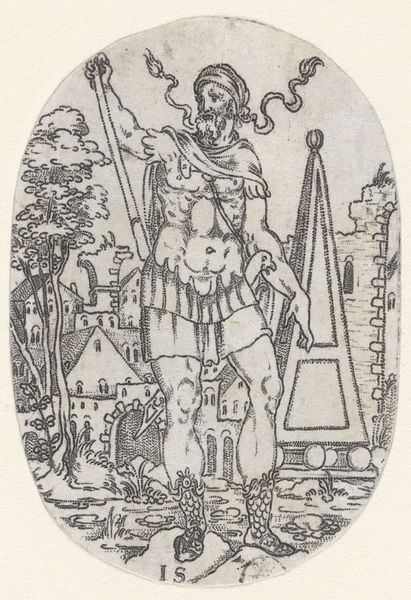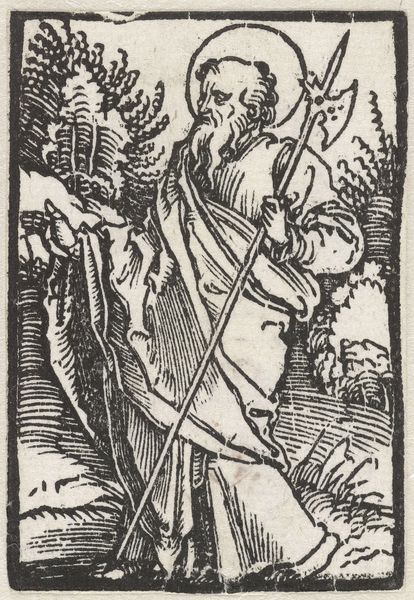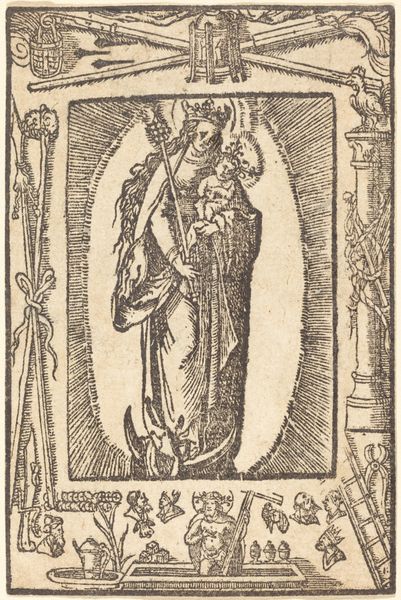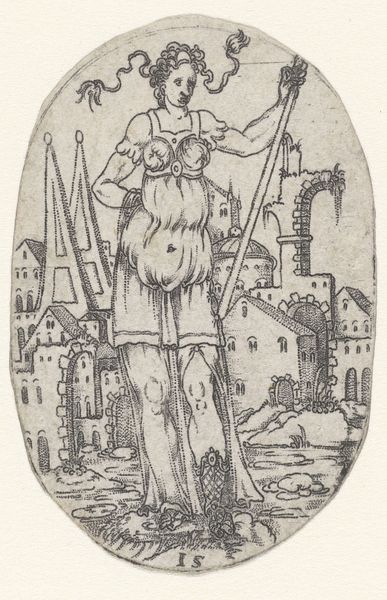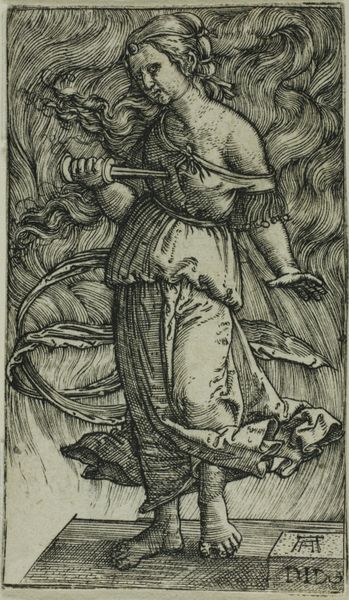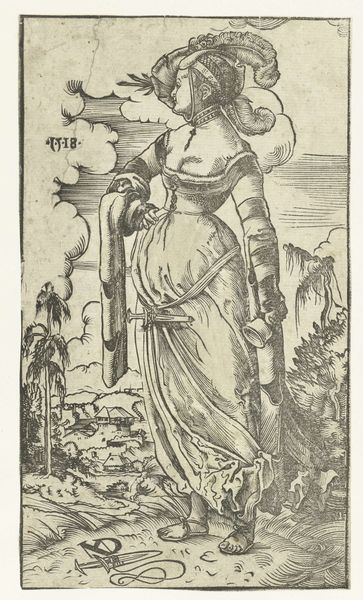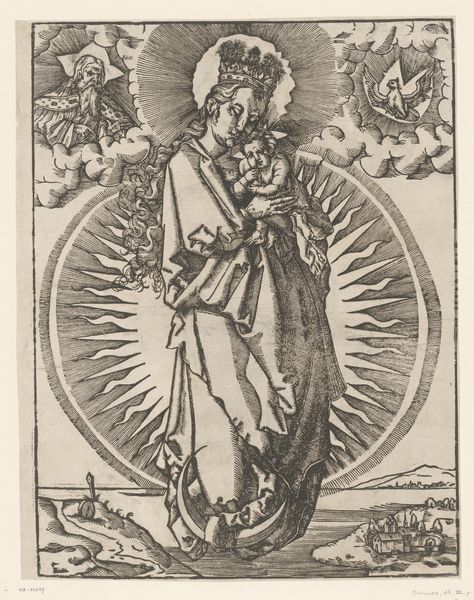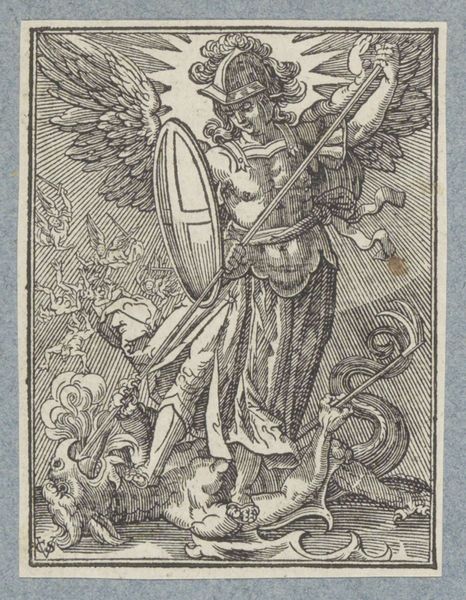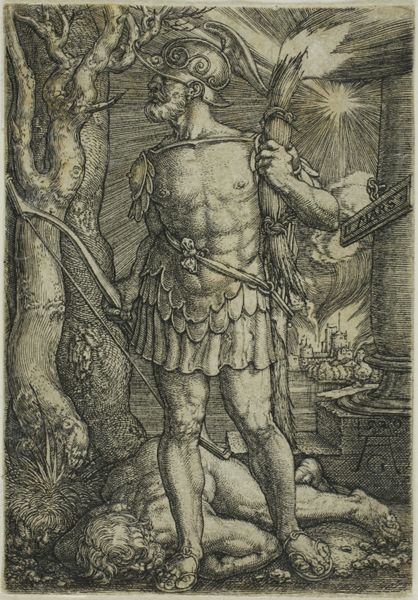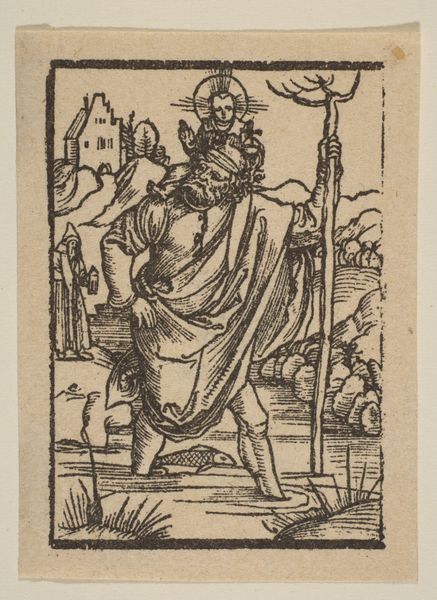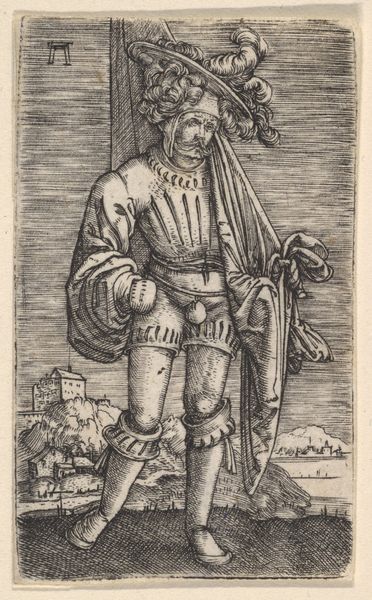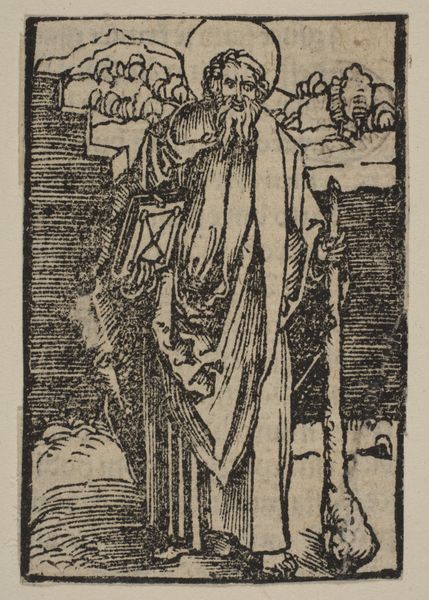
drawing, print, engraving
#
portrait
#
drawing
#
medieval
# print
#
old engraving style
#
figuration
#
history-painting
#
engraving
Dimensions: height 66 mm, width 42 mm
Copyright: Rijks Museum: Open Domain
Curator: This is a particularly striking engraving of a helmeted man in a coat of arms, leaning on a staff, dating back to between 1572 and 1589. Editor: Yes, my first impression is of a sort of melancholic power. He’s clearly a figure of authority, but the subdued linework creates a sense of introspection rather than outright dominance. The limited palette of engraving, of course, emphasizes a graphic feel. Curator: Absolutely. We see this figure grounded by a background showing village architecture of his time. The contrast sets up an interesting visual tension—between the man’s power, and the very clear image of a communal living space. In considering questions of power and portraiture, whose stories were being told in prints like these, and who was being systematically silenced? Editor: That’s insightful. Thinking about production, I’m drawn to the engraver’s skill, their use of line to suggest depth and texture with such simple tools, given that paper, metal and ink production would require highly skilled artisans. Also interesting is that the print format makes me think of its accessibility; engravings were like reproducible means of propagating messages for broad consumption. What would that message be for its original consumers? Curator: The questions you’re asking get to the very nature of art’s entanglement with gender and class. Was this for the consumption of the elites? Were popular ideologies, political allegiances of masculinity being perpetuated through a figure associated with this military might, available on paper, and made at such a scale for dissemination to the population at large? I'd ask what material constraints shape our narratives, which in turn shape societal perception, especially given we can infer from his outfit an identity that associates this man with an elevated socio-economic status and military identity. Editor: Interesting...It is also interesting how the material constraints dictated the image itself... To extrapolate based on our previous exchange, could it also be that certain identities became culturally amplified through such reproducibility as much as the work amplifies such ideals? Curator: Precisely. What we see is a visual snapshot reflecting a system where certain materials, disseminated widely, contributed to maintaining certain hierarchies and privileges through their display and representation. Editor: Food for thought... On that note, I feel that reflecting on the economic landscape that gave rise to such materials might grant us insights into power as the subject and power within society. Curator: Agreed. The narratives embedded here show how deeply historical structures shaped individual and collective consciousness through something as tangible as print production, and those same tensions and dialogues persist.
Comments
No comments
Be the first to comment and join the conversation on the ultimate creative platform.
